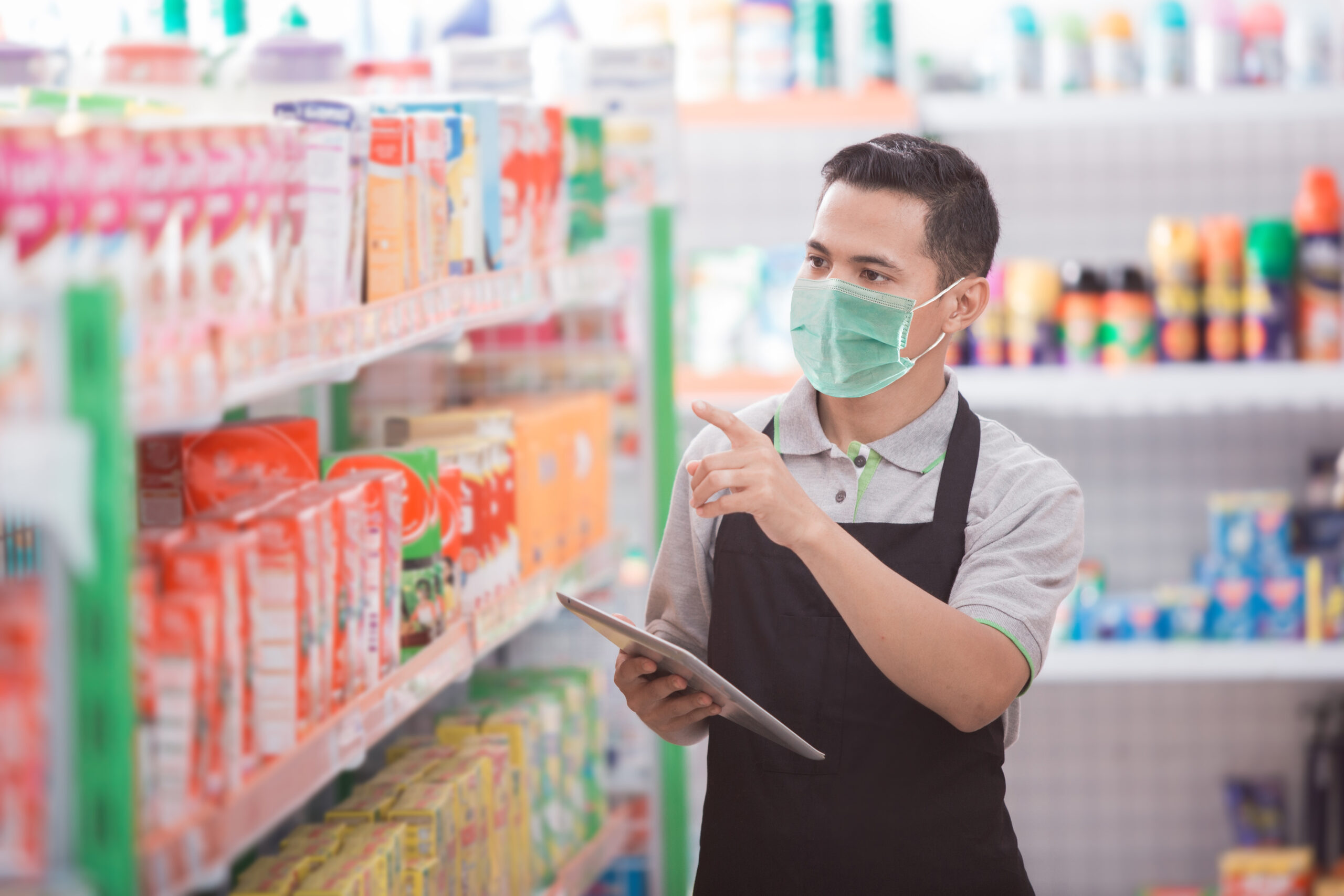
Occupational Health Specialists are helping us put together a Coronavirus Health & Safety Guide for field sales teams returning to work. Here are 10 tips for minimizing the risk of contracting and spreading the virus while visiting customers and prospects in the field.
Returning to business as “newsual”
Until we have a proven vaccine for preventing COVID-19, the disease caused by the new coronavirus (SARS-CoV-2), there will be no business “as usual.” Until then, we need to accept and adapt to a new way of doing business: business as “newsual”.
Returning to work means new processes and procedures need to be followed to minimize the risk of contracting and spreading the virus.
There are many safety guidelines being drafted, but as yet, there isn’t one focused on field/outside sales teams specifically, so we’re in the process of putting together a safety guide to address the situations you and your teams will be facing daily in your jobs during the COVID-19 pandemic.
Although many of your daily tasks can be conducted from home and via video conferencing, there’s still a need for in-person visits for research, deliveries, prospecting and sales. In order to protect yourself, your teams and your customers from contracting the virus, you now need to take extra precautionary measures when visiting customers and prospects in the field.
So, we’re working Occupational Health Specialists to create and source the most relevant best practices and safety tips for sales teams returning to work in the field during the COVID-19 pandemic.
Take your own lunch, tea/coffee and water with you. If you are offered tea or coffee or water by your customer, remember that all surfaces – including glasses and cups – can carry the virus and can be spread to your hands and then anything your hand touches. Use caution and common sense if you decide to accept. Otherwise, simply avoid eating or drinking at your customer’s workplace. Do not use public transportation unless absolutely necessary.
Take your and your family members’ body temperatures as per protocol, every morning. If the temperature is 37.5°C or above, stay at home and contact your manager.
Do not take anyone else with you to see customers, unless absolutely necessary. Every additional person you take with you is potentially an additional carrier or contractor of SARS-CoV-2.
As, always, clean your hands often with a minimum 60% alcohol-based hand rub, or wash them with soap and water. Avoid touching your eyes, mouth, or nose unless you’ve just disinfected/washed your hands.
Avoid physical contact while greeting (no shaking hands, for example). A slight bow or nod and smile should be enough. Maintain physical distancing (2m is the WHO recommendation) at all times during your visit.
Avoid carrying any paper catalogues or forms with you – paper can carry SARS-CoV-2 and enable its spread onto others who handle the material. Try to keep your product catalogue and forms digital and available for viewing and completion on your laptop or mobile device.
Take as few items as possible with you into your customer’s workplace. Limit the number of persons in any conference, meeting or training event to allow for a physical distance of 2 metres to be maintained between everyone.
Avoid touching surfaces, papers or items in your customers’ workplace, especially in the waiting areas and toilets. Avoid touching pamphlets and magazines. For example, do not sign in yourself – ask the receptionist or security to sign you in and sign for you to avoid unnecessary contact with pens and surfaces. “The most important thing to know about SARS-CoV-2 on surfaces is that they can easily be cleaned with common household disinfectants that will kill the virus. A small study in the NEJM has shown that the SARS-CoV-2 virus can survive for up to 72 hours on plastic and stainless steel, less than four hours on copper and less than 24 hours on cardboard.”
9. Sanitize and disinfect
When getting back into your car after a customer or prospect visit:
- Sanitize your tablet, phone, pen, and any other item used in the visit.
- Sanitize your hands
- Use a disinfectant spray to sanitize your mask and your shoes.
- Store your mask in an airtight container – if possible, put on a new washable mask at every visit to avoid cross-contamination
- Enter the data as required by the App for post meeting screening.
When you arrive home, disinfect your shoes and mask with a disinfectant spray, and sanitize or wash your hands before greeting friends or family. Ensure your masks are washed, dried in the sun and ironed, if possible, before your next visit.
Carry spare disposable masks (in a sealed packet) that you can offer your customers should they not be wearing one. Carry a spare mask for yourself. If someone has coughed in your presence, you may wish to change your mask. Be sure to accustom yourself with the essentials of responsible mask wearing, presented below by Prof. Mark Mendelson, Head of Infectious Diseases Division at Groote Schuur Hospital, University of Cape Town.
Please stay alert, follow these recommended guidelines to stay safe and keep selling!
*Please refer to the National Institute for Occupational Health for general and industry-specific fact sheets at for more information.
**Disclaimer: This article does not provide medical advice. It is intended for informational purposes only. It is not a substitute for professional medical advice, diagnosis or treatment. Never ignore professional medical advice because of something you have read in this article.
Sources:
Department of Employment and Labour, NICD, NIOH, WHO and CDC
https://knowledgetranslation.co.za/research/
https://coronavirus.westerncape.gov.za/files/atoms/files/COVID-19%20public%20mask%20leaflet
%20eng%20final.pdf
https://www.health.harvard.edu/diseases-and-conditions/coronavirus-resource-center


